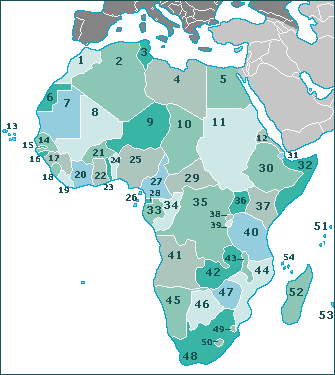Arid? And what about the huge rain forests at the equator, or the 10-mt yearly rainfall in Cameroon?
Poor? But Africa abounds of resources: valuable woods, coffee, tobacco, gold, copper and diamonds.
The truth is that Africa is a continent of contrasts, a continent of terrible wounds opened in the African heart by ruthless exploitation and organized kidnapping; but it is also a fascinating land, able to engender a great love in those who come close enough to the continent's true self. Once only a destination for adventurers, explorers and romantic writers, nowadays Africa is within reach of every visitor.


